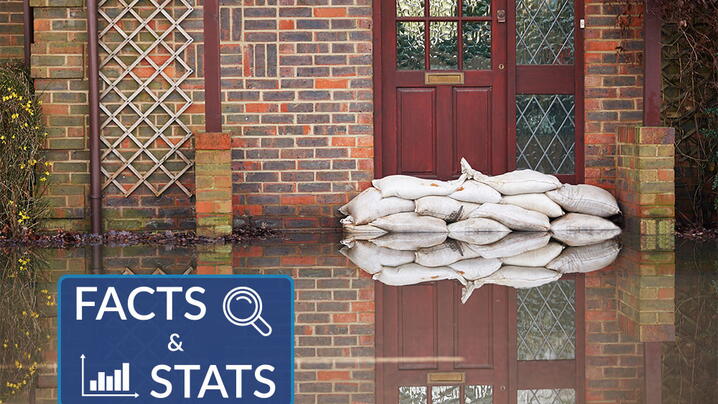
Weather-related disasters have taken a toll on communities across the country and abroad in the past year. Hurricanes Michael and Florence hit the southeast region last fall, causing flooding and millions of dollars in damage. A massive earthquake and tsunami in Indonesia last September devasted cities and villages and killed over 2,000 people. The camp fire in California destroyed more than 150,000 acres and over 13,000 homes in November 2018, displacing hundreds of families.
Right now, record-breaking flooding across the Midwest has submerged farms and stores, split open levees and, in some places, left people stranded for days or weeks. Local governments in the region have been working hard to prepare for continued flooding, assist those residents who have been affected, and restore their communities.
As weather-related disasters increase in intensity and frequency, it's important to understand the context of these crises and of the local governments in preparing and responding to weather emergencies.
ICMA provides a number of resources to help local governments think critically about their disaster management processes. Our resources are based on extensive research conducted with local governments, including surveys, case studies, and publications. Our data helps to provide an understanding of the big picture of crisis management in local governments. Below are some key facts and stats from ICMA research, including the recently published Leading Edge Research "Leadership and Professional Local Government Managers: Before, During, and After a Crisis" by Ron Carlee and the 2015 survey on Local Government Sustainability Practices.
76 percent of local governments have responded to a major disaster in the past 15 years.
According to the Federal Emergency Management Agency (FEMA), in 2017, 25 million Americans, almost 8 percent of the U.S. population, were impacted by disasters declared by FEMA, including 59 major disaster declarations, 16 emergency declarations, and 62 Fire Management Assistance Grant declarations, across more than 35 states, tribes, and territories. In 2018, the number of FEMA-declared disasters increased to 123, hitting 41 of the 50 states. It is not surprising that more than three-fourths of local governments report responding to a disaster. This is a challenge that can hit any jurisdiction, not just those that have faced disaster before.
The top three disasters that communities responded to in the past 15 years are floods, blizzards or ice storms, and hurricanes.
Flooding is the crisis most often mentioned by ICMA members as an issue in their communities, with 53 percent reporting that they have addressed a flood. According to the Pew Charitable Trust, flooding remains “the costliest and most common natural disaster in the U.S.,” costing billions annually. Hurricanes can have a similarly devastating effect, and with hurricane season lasting from June 1 to November 30, there is big window of opportunity for a community to be affected. The National Oceanic and Atmospheric Administration (NOAA) predicts a near-normal 2019 Atlantic hurricane season, with El Nino and a warmer-than-average Atlantic helping to shape this season’s intensity.
The survey showed that 86.9 percent of local governments reported that their jurisdiction has a hazard mitigation plan or an emergency evacuation/relocation plan.
Of those who reported having a plan, however, only 68.6 percent reported addressing issues of at-risk (low income, seniors, etc.) residents. It is not only important to have a mitigation plan for the community, but it is imperative that localities think about how their plan will specifically support those who may need additional assistance.
Although daunting, these data points help to illustrate the importance of preparing for a disaster in your community. Serving as a practical companion piece to the Leading Edge Research, the Disaster Recovery Essentials describes important takeaways from managers’ experiences in eight recovery topics. Each includes a set of related questions to help other managers begin to assess and improve their own capacity to lead a community through recovery. Download today!
New, Reduced Membership Dues
A new, reduced dues rate is available for CAOs/ACAOs, along with additional discounts for those in smaller communities, has been implemented. Learn more and be sure to join or renew today!
